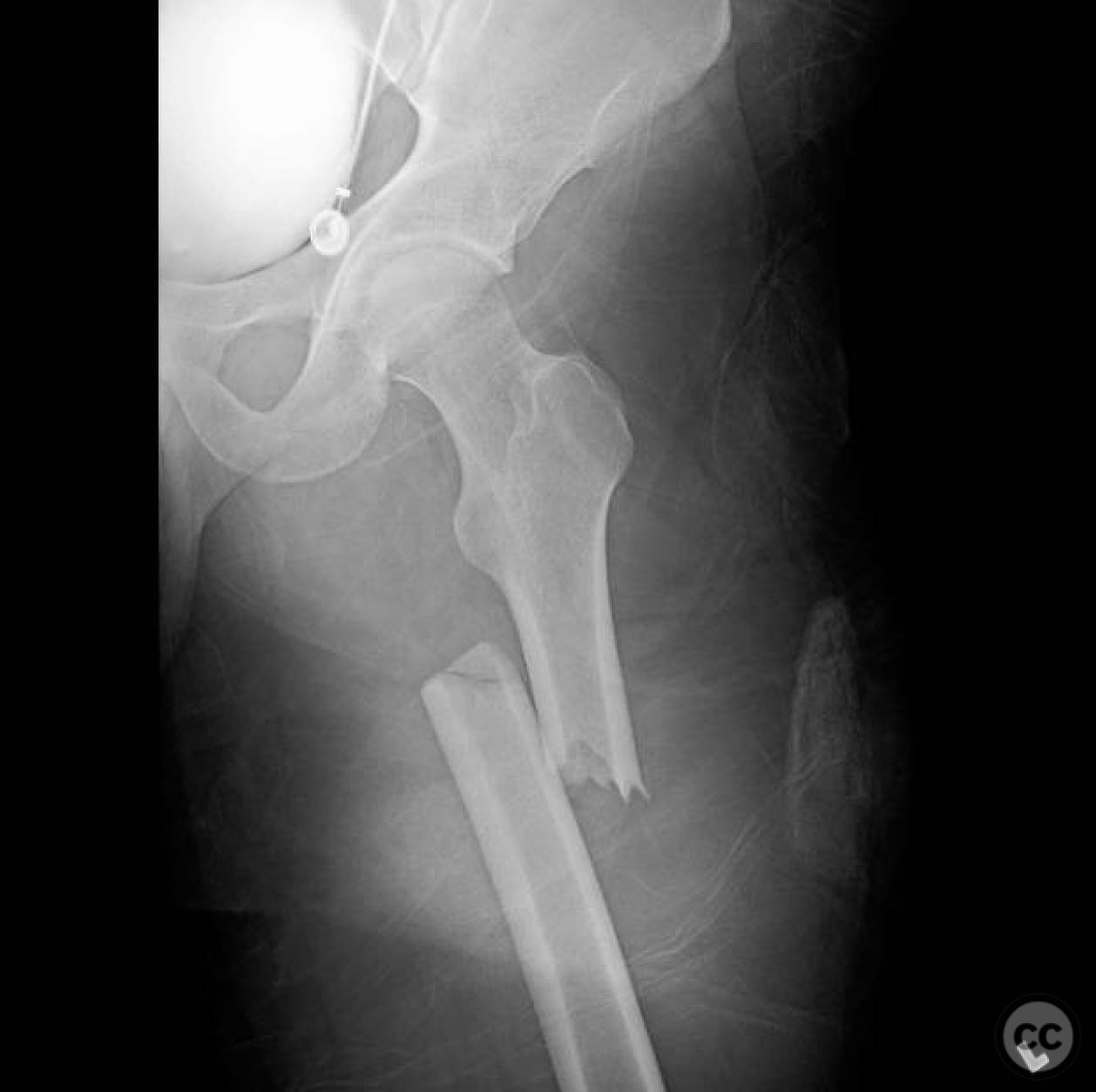Open Femoral Shaft Fracture in a Young Adult: The Necessity of Formal Debridement
Score and Comment on this Case
Clinical Details
Clinical and radiological findings: A 20-year-old male presented following a motorcycle accident with an open femoral shaft fracture. The patient sustained a 1 cm lateral thigh wound, classified as a Gustilo-Anderson Type IIIA open fracture due to the mechanism and energy involved, despite the small size of the skin wound. There were no associated head, chest, or abdominal injuries.
Preoperative Plan
Planning remarks: The preoperative plan involved a formal surgical exposure of the zone of injury for thorough debridement of the contaminated and devitalized tissues, including the bone that had protruded through the skin. This was followed by stabilization of the femoral shaft fracture. The anticipated approach was a lateral incision along the thigh to allow for adequate exposure and debridement.
Surgical Discussion
Patient positioning: The patient was positioned supine on the operating table to facilitate access to the lateral aspect of the thigh and allow for intraoperative fluoroscopic imaging.
Anatomical surgical approach: A longitudinal lateral approach to the femur was performed. The incision extended along the lateral aspect of the thigh, allowing for subfascial dissection and exposure of the fracture site. The zone of injury was thoroughly debrided, including removal of any foreign material and devitalized tissue. The fracture was then stabilized using appropriate internal fixation.
Operative remarks:The surgeon emphasized the importance of recognizing the high-energy nature of open femoral shaft fractures, regardless of the size of the skin wound. A formal exposure and debridement were deemed essential to prevent infection and ensure proper healing. The procedure adhered to the standard of care for such injuries, focusing on meticulous debridement and stabilization.
Postoperative protocol: Postoperatively, the patient was placed on a rehabilitation protocol that included non-weight bearing on the affected limb initially, with gradual progression to partial weight bearing as tolerated. Range of motion exercises were initiated early to prevent joint stiffness.
Follow up: Not specified.
Orthopaedic implants used: Intramedullary nail for femoral shaft stabilization.
Search for Related Literature

orthopaedic_trauma
- United States , Seattle
- Area of Specialty - General Trauma
- Position - Specialist Consultant

Industry Sponsership
contact us for advertising opportunities







Article viewed 115 times
16 Jul 2025
Add to Bookmarks
Full Citation
Cite this article:
Surname, Initial. (2025). Open Femoral Shaft Fracture in a Young Adult: The Necessity of Formal Debridement. Journal of Orthopaedic Surgery and Traumatology. Case Report 19641491 Published Online Jul 16 2025.